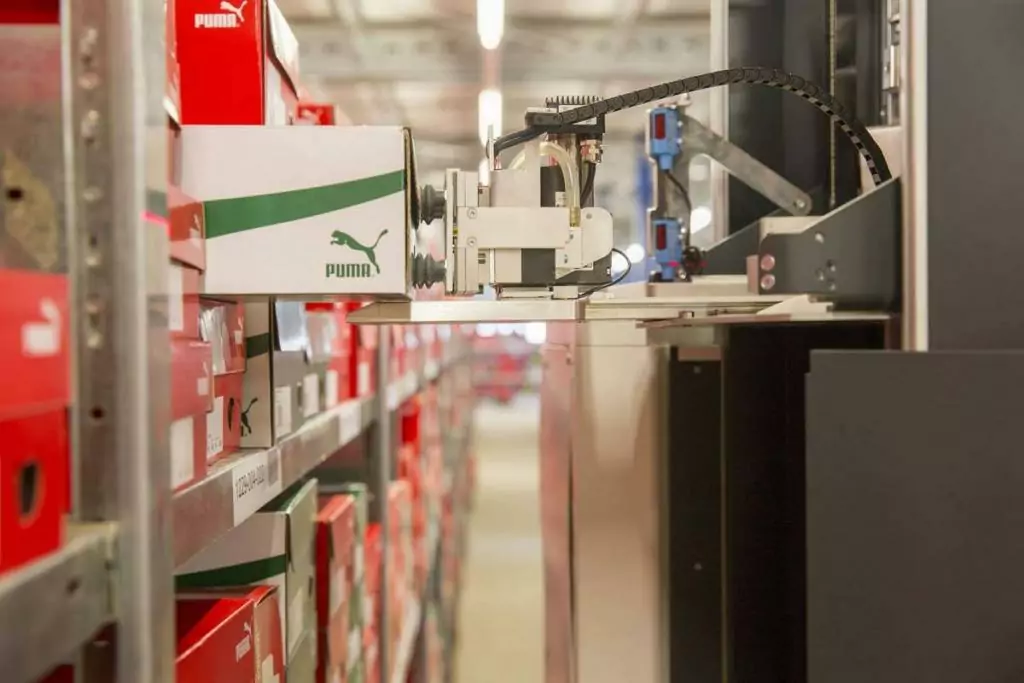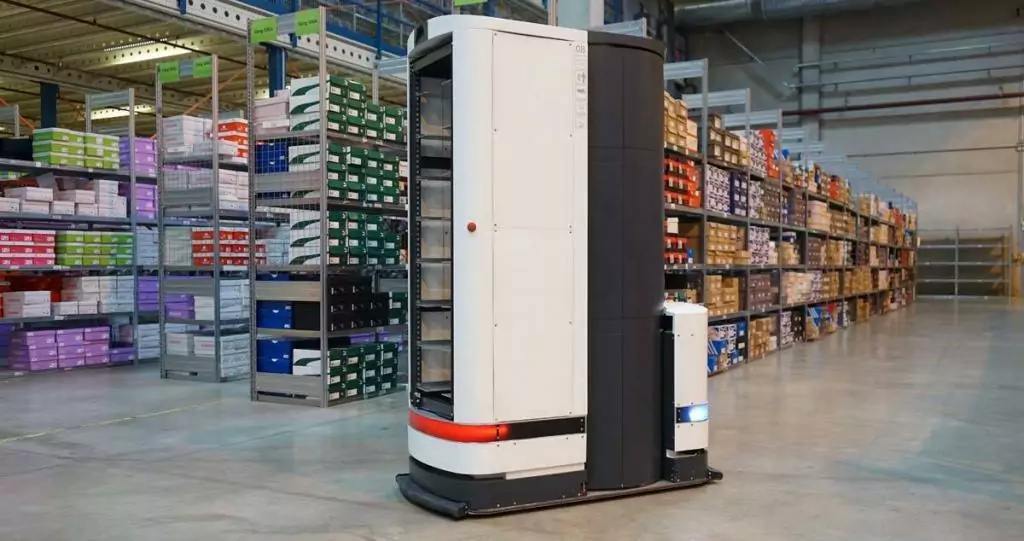The picking type Pick-by-Robot means the picking of goods, carried out by so-called perception-controlled logistics robots – without human intervention. Perception-controlled logistics robots are a further development of autonomous systems that previously transported pallets (such as Europool pallets) or crates automatically. Since these are not rigid or permanently installed system robots (see example video), complex manual processes within intralogistics can be flexibly automated (order peaks).
In Germany, the picking method Pick-by-Robot was first presented at the German Logistics Congress in Munich in 2015. At that time it was the company Magazino, which presented a completely new variant of order picking with the robot type ‘TORU’.
Pick-by-Robot in practice
Instead of a warehouse worker or order picker who takes the goods from the respective storage compartment (pick) or the semi-automated variant where the goods are transported from the storage location to the warehouse worker by means of conveyors, Pick-by-Robot is a fully automated method. The individual items are gripped directly by a mobile shelf robot. The robot is connected to the warehouse management system (WMS) or host (ERP system) via WLANand receives the picking order directly from one of these systems. As a rule, several picks are digitally compiled for a tour and processed independently.
Example TORU / TORU-Cube
The perception-controlled logistics robot TORU moves close to the shelf and grips the required object directly from the shelf or pulls the required carton towards itself. The work step is supported by the extending tray. The goods taken from the shelf are then temporarily stored within the robot in variable storage compartments (see video).
If, on the other hand, he has to remove goods from a mixed carton, he is supported by the 2D and 3D cameras built into the gripper arm. They scan, on the basis of 3D computer vision, first the entire shelf contents and after a successful comparison with the database, the so-called matching, only the sought-after good is taken from the box. With the rotatable lifting column, TORU can reach objects at a height of ten centimetres up to 209 centimetres. He then stores the picked objects, as mentioned above, in his integrated rack and takes the removed goods directly to a shipping or collection station.


Important: Numerous sensors support the perception-controlled picking robot in working parallel to humans in the same work area, thus ensuring flexible automation of previously manual work steps.
However, there are also pick-by-robot examples where the goods are automatically fed to the robot via the conveyor system, stored on trays or boxes. The SSI Robo-Pick (see video) or the AutoPiQ from Swisslog (see picture) are either permanently installed or have a mobile substructure. Disadvantage: Although up to 2,400 picks per hour are possible with such systems, these order picking systems cannot be used flexibly due to the dependence of the permanently installed conveyor technology.

For more information about picking, see also the articles Pick-by-Vision and Pick-by-Scan.
Also available in Deutsch (German)